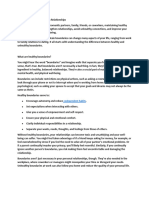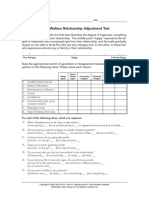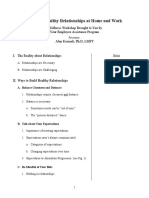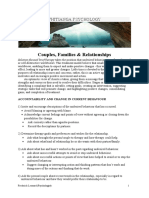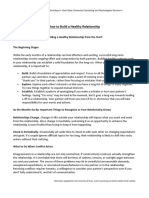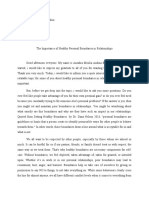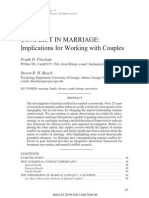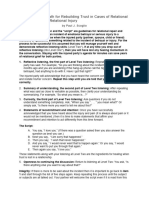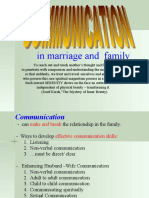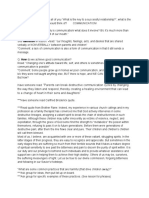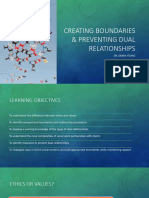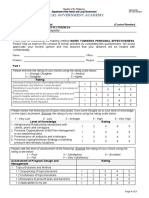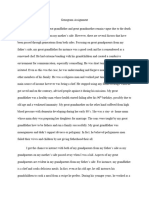0% found this document useful (0 votes)
426 views10 pagesA Relational Toolbox / Best
This document provides a relational toolbox with simple tools to help have more constructive conversations when families are facing challenges. It outlines several techniques including: beginning conversations with prayer; focusing on hopes rather than problems; inviting positive stories; using curiosity; maintaining neutrality; asking circular questions; exploring problems from multiple perspectives; using different words; scaling to measure relationship issues; understanding beliefs and values; slowing conversations and interrupting unhelpful patterns; and encouraging effective listening. The overall aim is to create a safe space and set ground rules to have respectful discussions focused on understanding each other and finding collaborative solutions.
Uploaded by
Petar LukicCopyright
© © All Rights Reserved
We take content rights seriously. If you suspect this is your content, claim it here.
Available Formats
Download as DOCX, PDF, TXT or read online on Scribd
0% found this document useful (0 votes)
426 views10 pagesA Relational Toolbox / Best
This document provides a relational toolbox with simple tools to help have more constructive conversations when families are facing challenges. It outlines several techniques including: beginning conversations with prayer; focusing on hopes rather than problems; inviting positive stories; using curiosity; maintaining neutrality; asking circular questions; exploring problems from multiple perspectives; using different words; scaling to measure relationship issues; understanding beliefs and values; slowing conversations and interrupting unhelpful patterns; and encouraging effective listening. The overall aim is to create a safe space and set ground rules to have respectful discussions focused on understanding each other and finding collaborative solutions.
Uploaded by
Petar LukicCopyright
© © All Rights Reserved
We take content rights seriously. If you suspect this is your content, claim it here.
Available Formats
Download as DOCX, PDF, TXT or read online on Scribd
/ 10





